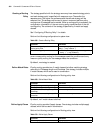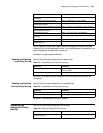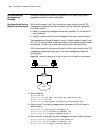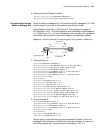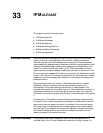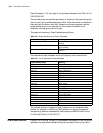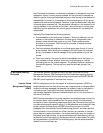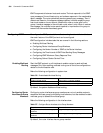
33
IP MULTICAST
This chapter covers the following topics:
■ IP Multicast Overview
■ IP Multicast Addresses
■ IP Multicast Features
■ IP Multicast Routing Protocols
■ IP Multicast Packet Forwarding
■ IP Multicast Application
IP Multicast Overview When the destination addresses carrying information (data, voice, and video)
transmit with only a few subscribers in the network, multiple transmission
methods such as unicast and broadcast can be employed. Unicast transmission
means establishing a separate data transmission channel for each subscriber, while
broadcast transmissionmeans sending the message to all the subscribers in the
network no matter whether they need it or not. If 200 subscribers in network
require receiving the same message, traditionally there are two solutions for this.
One is to send such message 200 times to ensure that all the subscribers are able
to get it. The other one is to transmit the data within the whole network to enable
subscribers to get the necessary data directly from the network by adopting the
broadcast method.
Using the unicast method to transmit to 200 subscribers results in wasted
bandwidth. Using the broadcast method risks information security and
confidentiality. IP multicast technology solves both of these problems. The
multicast source sends the information only once. The transmitted information is
duplicated and distributed continuously at key network nodes. In this way, the
information can be sent accurately and efficiently to each subscriber who requires
it.
In simple terms, IP multicast is a bandwidth-saving technology. It sends a single
information flow to several receivers simultaneously to reduce network traffic. In
case a router does not support multicast in the network, the router can employ
the tunnel method to encapsulate the multicast packets in the unicast packets,
and send them to the adjacent multicast router. Adjacent multicast routers drop
the unicast IP header, and then continue the multicast transmission to avoid
causing a change to the network structure.
IP Multicast Addresses IP multicasting uses Class D addressing. Each multicast address stands for a
multicast group, not for a host. Because the maximum four-digit number of a




